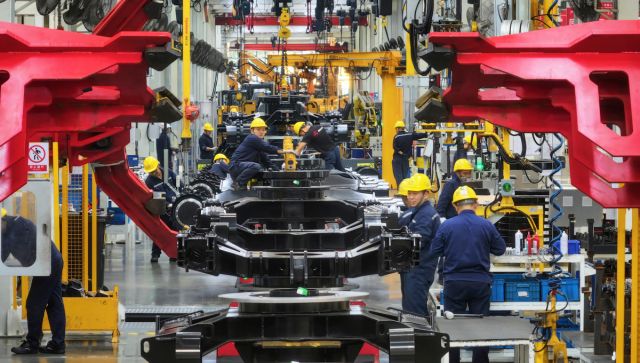There is clearly going to be little comfort in numbers for the NDA government. Even though inflation is easing up in general and industrial output has lifted itself off the floor, there are going to be monthly blips.
The June Index of Industrial Production (IIP) unexpectedly fell to 3.4 percent from 4.7 percent in May; the July Consumer Price Index (CPI) , expectedly, spiked to 7.96 percent from 7.46 percent in June.
So the assumption that the worst is over will periodically be challenged by the monthly data releases coming from the government’s number crunchers. The Reserve Bank of India was thus right to avoid jumping into precipitate action on rate cuts in its bimonthly policy statement of 5 August.
The villain in CPI is food inflation, where the combined food price inflation rose from 8.05 percent in June to 9.36 percent in July. This rise in food inflation was largely driven by milk (up 11.2 percent), veggies (up 16.88 percent) and fruits (up 22.48 percent).
But this is the seasonal spike we see every year. And it could continue in August and even September. So one need not be overly worried, especially since the feared monsoon failure is now gone, and we could end up with near-normal rains. The worry will be only about the spatial distribution of the monsoon.
The news could get better as the year unfolds, now that fuel subsidies (especially diesel) are being wound down. The diesel subsidy is down to Rs 1.33 a litre, which means we are just a month or two away from the end of diesel subsidies altogether - assuming global crude prices stay reasonable.
The not-so-exciting performance of the June IIP, however, needs more explanation. The spike we saw in May moderated in June, but the divergence is between the performance of consumer and non-consumer industries.
The June numbers show that capital goods production soared 23 percent, while consumer goods dropped 10 percent - with a sharper drop of 23.4 percent in consumer durables and flat growth in non-durables. What this means is that people are still not buying more TVs or fridges even though there is now greater optimism on the economic front.
Business, on the other hand, seems to be gung-ho about investing, as revealed in both the capital goods growth number as well as basic (9 percent) and intermediate goods (2.7 percent) growth. This is broadly in line with market sentiment, which has been buoyant after the election of the Modi government.
Taking the April-June period as a whole, which helps us smoothen out the month-to-month lumpiness in data, we get an IIP growth of 3.9 percent. Consumer goods is a drag on output, but much lower at -3.6 percent.
The takeout is clear: business is chirpier after the government change than ordinary folks. The aam aadmi is holding back on spending and is waiting to see if achche din is for real or just a passing shift in sentiment.


)




)
)
)
)
)
)
)
)